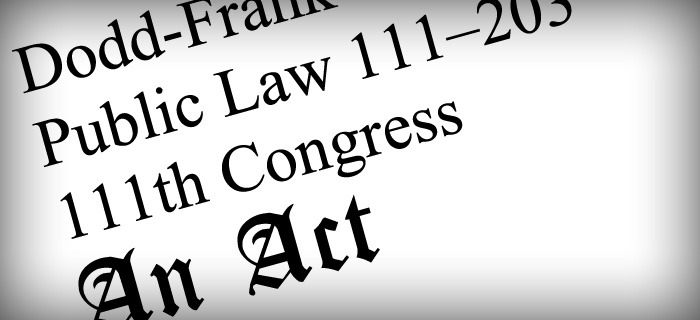In 1930, an obscure lawsuit against Bethlehem Steel unearthed a piece of corporate data that would quickly outrage Great Depression-era America. Bethlehem CEO W.R. Grace, Americans learned, had grabbed $1.6 million in personal compensation the year before.
That revelation would soon help fix a variety of new regulations on America’s corporate executive suites, including a mandate that required companies to annually reveal—for the first time ever—the pay of their top executives.
| They appear deathly afraid that their gravy train may soon derail. |
Over the next four decades, executive pay in America would essentially stagnate. In effect, points out historian Harwell Wells, corporations observed an unofficial $1 million limit on annual CEO compensation. No major firms dared exceed that limit—and risk the public furor exceeding the limit would surely bring.
But CEO pay would start rising again, slowly in the 1970s and then much more rapidly in the 1980s, as some of the dominant pressures that had restrained excessive compensation—most notably, a strong trade union presence and high federal tax rates on high incomes—began to melt away.
By the 1990s, million-dollar executive paychecks would be commonplace. By the early 2000s, CEOs were regularly busting the $10 million barrier.
Now a new analysis has revealed that Corporate America has obliterated still another barrier. In 2012, GMI reported last week, the nation’s 10 highest-paid CEOs all pocketed more than $100 million each.
Before 2012, that had never happened before.
Researchers at GMI track “realized pay,” a yardstick that offers, many observers believe, the clearest sense of how fabulously lucrative executive stock awards have become.
These stock awards currently come in various forms. Stock “options,” the most lucrative of them all, give executives the right to buy shares of their company’s stock at a future date at the current stock price. If a company’s shares gain in value, the executive can buy low at that future date and sell high.
In 2012, GMI indicates, Sirius XM Radio CEO Mel Karmazin collected $255.4 million in total realized compensation. Of that sum, $244.3 million came from exercising stock options he had received in earlier years.
Karmazin only rates third on GMI’s top-paid 10 for 2012. The year’s first-place finisher, Facebook CEO Mark Zuckerberg, pulled in an astounding $2.3 billion. In second place: the chief exec at energy pipeline giant Kinder Morgan, Richard Kinder, with $1.1 billion.
America’s top-paid CEOs, all these totals show, now reside comfortably in nine- and 10-digit annual pay territory, a level that once upon a time only hedge and private equity fund kingpins called home.
So have we hit the ultimate party time for America’s CEOs? Not really. Today’s top CEOs don’t appear to be celebrating. A deep sense of apprehension, not joy, seems to have invaded America’s executive suites. What’s going on? America’s CEOs appear deathly afraid that their gravy train may soon derail.
That fear is driving the massive—and borderline hysterical—lobbying campaign that corporate power suits are now waging against a provision of the 2010 Dodd-Frank Wall Street Reform and Consumer Protection Act.
This particular provision, the law’s section 953(b), requires corporations to annually reveal the ratio between what they pay their top execs and what they pay their most typical workers.
The U.S. Securities and Exchange Commission, after long delays, last month proposed regulations to enforce this mandate. Top execs—and their underlings—have been bombarding the SEC with overheated complaints ever since.
By law, the SEC must invite “public comment” before finalizing any new regulations. The comments power suits are now filing come full of ludicrous doomsday claims. Human resource execs are even predicting that the proposed new SEC regs will create “chaos.”
The National Investor Relations Institute, the trade group that speaks for the corporate officials who handle disclosure issues, is specifically charging that the pay ratio disclosure will “confuse most investors” and impose “exorbitant” compliance costs on corporations.
One consultant goes further. He’s claiming that shareholders at corporations that show only modest gaps between their CEO and median worker pay might demand pay cuts for workers!
The organizations that actually represent workers, trade unions, couldn’t disagree more. They’re lining up solidly for a robust enforcement of the Dodd-Frank pay ratio disclosure. And they’re finding support from business leaders who understand how corrosive pay gaps have become.
One small business leader from Colorado, Laurie Norton, reminded the SEC last month that an “inequitable distribution of income” is threatening our democracy.
“Not revealing the absurd ratios of CEO pay to that of average workers,” she told federal regulators, would be the “equivalent to sweeping and leaving our dirt under the rug.”
Sam Pizzigati is an Associate Fellow at the Institute for Policy Studies and editor of Too Much: A Commentary on Excess and Inequality. His latest book is The Rich Don’t Always Win: The Forgotten Triumph over Plutocracy that Created the American Middle Class.






0 Comments